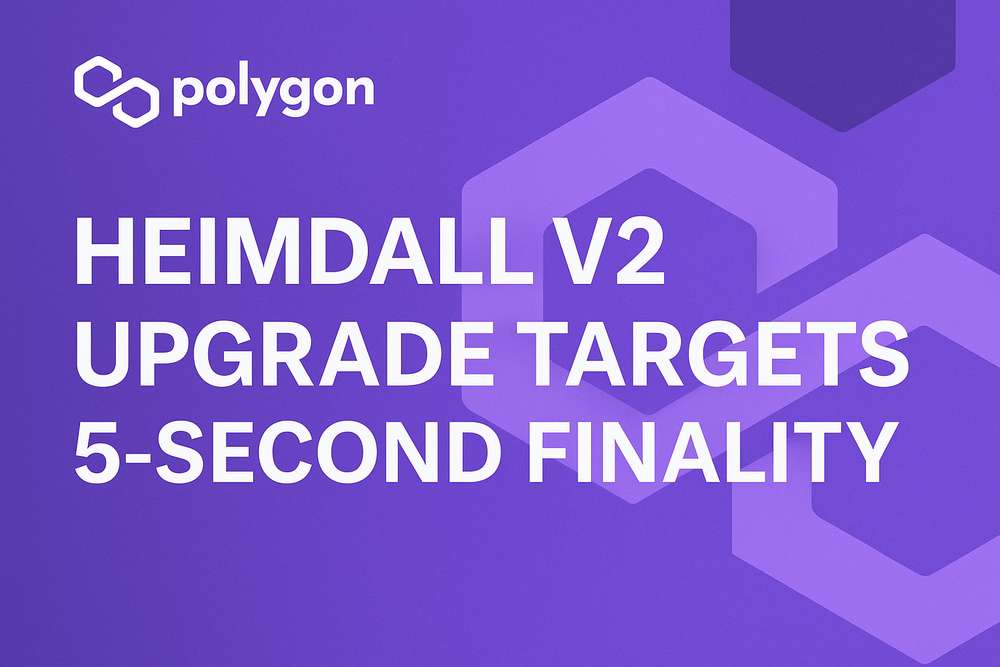
Polygon’s Heimdall v2 upgrade is scheduled for July 10, 2025, marking the network’s most significant technical overhaul since its 2020 launch. The migration aims to reduce transaction finality to approximately 5 seconds while addressing accumulated technical debt. Validators are preparing for the complex hard-fork, which will execute between 2:00 PM and 5:00 PM UTC during a planned 30-minute maintenance window.
Polygon Foundation CEO Sandeep Nailwal described the upgrade as “the most technically complex hard-fork Polygon PoS has seen” in a public statement. The migration follows successful testing on the Amoy testnet in late June, where developers validated the new architecture’s stability. This overhaul replaces legacy systems dating back to Polygon’s 2018-2019 infrastructure.
The POL token has shown positive momentum ahead of the upgrade, with The Block reporting a 6.2% price surge to $0.20 and a market capitalization of $1.8 billion. This outperformed the broader crypto market, where The Block’s GMCI 30 index gained just 1.7% during the same period.
![]()
Install Coin Push to get profitable crypto trading notifications.
Technical Specifications
Heimdall v2 introduces a new Cosmos-SDK architecture with completely redesigned APIs, requiring third-party services to update integrations. Node operators must migrate to the updated software, with documentation available through Polygon’s official portal. The upgrade eliminates technical constraints that previously limited transaction throughput and settlement speed.
Finality reduction represents the most significant user-facing improvement, cutting blockchain confirmation times from minutes to seconds. This enhancement positions Polygon to better compete with emerging Layer 2 solutions while improving decentralized application responsiveness. The network’s documentation details comprehensive module changes and migration checklists.
| Network | Date | Time (UTC) |
|---|---|---|
| Amoy Testnet | June 24, 2025 | 6:30 PM – 9:30 PM |
| Mainnet | July 10, 2025 | 2:00 PM – 5:00 PM |
Market Response
POL’s price surge reflects trader optimism about the upgrade’s potential to enhance network efficiency. Trading volume reached 597,718 tokens recently, significantly exceeding the daily average of 189,000. Technical analysis indicates strong support between $0.183-$0.184 with resistance forming near $0.187.
The token’s performance contrasts with broader market trends, suggesting targeted investor confidence in Polygon’s technical roadmap. Market observers note that successful implementation could improve Polygon’s competitive positioning against Ethereum scaling alternatives. Historical data shows Polygon tokens typically experience volatility around major network upgrades.
Implementation Requirements
Validator operators must complete migration preparations before the July 10 deadline. Polygon’s documentation outlines critical steps including environment configuration and snapshot synchronization. Most validators have already upgraded according to Nailwal, though the team urges remaining operators to “test early” and report issues.
The migration requires approximately 30 minutes of mainnet downtime excluding troubleshooting. Node operators should monitor communication channels for real-time updates during the maintenance window. Community testing on the Amoy testnet revealed minimal complications, suggesting a smooth mainnet transition.
Post-upgrade, developers must adapt to new API endpoints for both Heimdall and Cosmos-SDK interactions. The overhaul includes optimized state synchronization and improved proof mechanisms. These changes aim to future-proof the network while reducing long-term maintenance burdens.
Install Coin Push mobile app to get profitable crypto alerts. Coin Push sends timely notifications – so you don’t miss any major market movements.
The Heimdall v2 upgrade represents a pivotal infrastructure advancement that could significantly enhance Polygon’s transaction efficiency and developer experience. Successful implementation may strengthen institutional confidence in Polygon’s technical roadmap while improving network performance metrics. Market observers will monitor adoption rates and technical metrics post-migration to evaluate the upgrade’s real-world impact.
- Finality
- The point where blockchain transactions become irreversible. Heimdall v2 aims to reduce this to 5 seconds from current multi-minute confirmation times.
- Technical Debt
- Accumulated compromises in software development that require future rework. Polygon’s upgrade addresses legacy constraints from its 2018-2019 architecture.
- Hard-Fork
- A radical protocol change creating permanent divergence from previous blockchain versions. Heimdall v2 constitutes Polygon’s most complex fork since launch.
- Validator
- Network participants who stake tokens to verify transactions and create blocks. Polygon validators must upgrade software before the July 10 migration.
This article is for informational purposes only and does not constitute financial advice. Please conduct your own research before making any investment decisions.
Feel free to “borrow” this article — just don’t forget to link back to the original.


Editor-in-Chief / Coin Push Dean is a crypto enthusiast based in Amsterdam, where he follows every twist and turn in the world of cryptocurrencies and Web3.